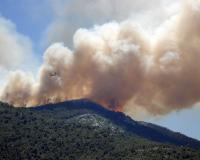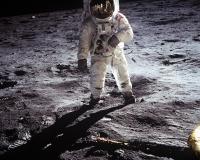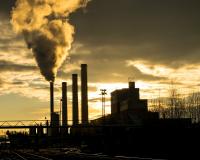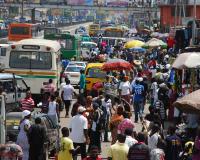
Vibrant Environment
All | Biodiversity | Climate Change and Sustainability | Environmental Justice | Governance and Rule of Law | Land Use and Natural Resources | Oceans and Coasts | Pollution Control

In recent months, the long-standing environmental justice (EJ) movement—which began with the civil rights movement—has gained new momentum. EJ refers to the “fair treatment and meaningful involvement of all people regardless of race, color, national origin, or income with respect to the development, implementation, and enforcement of environmental laws, regulations, and policies.” As natural disasters ravage minority, low-income communities, global climate justice campaigns demand equitable solutions, and members of Congress underscore the importance of ensuring environmental protection for our most vulnerable communities, EJ principles are given a leading role in the conversation about environmental policy.

Lasting repercussions of the 2018 fire season have continued to vex California’s electric utility sector, the state government, and communities across the state that are recovering from previous fires and bracing for the next wave of wildfires.
PG&E, the bankrupt private electric utility whose aging infrastructure has been linked to 19 major wildfires in 2017 and 2018, has faced withering coverage in the press, intense scrutiny by state officials, and public questioning in federal court. Earlier this month, the Wall Street Journal reported that PG&E has repeatedly delayed updates to its transmission lines and towers, many of which are still in operation well beyond their life expectancy.

Much of the media concerning climate change have direly emphasized that its most horrendous effects will be borne by some of the world’s most impoverished developing cities, with coastal settlements on the front lines of this siege. Yet, most of these headline-grabbing pieces rarely explore the true complexity of these issues beyond mere sea-level rise and a few other similarly visible or tangible environmental problems. This blog aims to briefly outline the deeper extent of crises threatening these cities by further examining an experience of one particular city. A city where the ravages of global warming are more than just dire warnings—but a clear and present burden on its overwhelmingly underprivileged citizens every day. A city that offers perhaps one of the most holistic case studies to examine the entangled causality between environmental and social issues wrought by climate change. My hometown, Karachi, Pakistan.

In honor of the Environmental Law Institute’s 50th Anniversary Year, each month of 2019 highlights a different key theme that represents an important aspect of our work. July is focused on environmental justice, a movement and a concept that encompasses efforts to highlight the disproportionately harmful environmental impacts experienced by vulnerable communities, as well as a commitment to ensuring justice for all people. The growing effort to identify environmental justice concerns and to develop solutions for communities closely aligns with ELI’s mission to make law work for people, places, and the planet, including through our work in the Gulf of Mexico region.

In a period of less than a month, everything good seemed possible for America. First came the Moon landing, on July 20, 1969. Billions watched our astronauts live from the lunar surface and took pride in humanity’s achievement. In the United States, the concept of collective will to conquer a huge national challenge got a big boost. Project Apollo joined the Manhattan Project as paradigms of government-led Yankee ingenuity licking a technological problem — and on a tight timetable to boot, expenses be damned because of the extreme nature of the threat.

The mission of California's Department of Toxic Substances Control (DTSC) is to "protect California's people and environment from harmful effects of toxic substances by restoring contaminated resources, enforcing hazardous waste laws, reducing hazardous waste generation, and encouraging the manufacture of chemically safer products." But, like any critical mission, its success depends on sufficient funding. And, to the detriment of the vulnerable communities it is charged with protecting, the Department is in the midst of dealing with a budget shortfall that will handicap its ability to reduce the amount of hazardous waste generated in California—hazardous waste that disproportionately impacts low-income and minority communities.

Throughout the month of July, ELI is taking a closer look at “Environmental Justice & Vulnerable Communities” as we continue to offer special events, programs, and publications in commemoration of our 50th Anniversary. As part of this month-long introspection into our work in environmental justice, Research Associate Lovinia Reynolds and Research and Publications Intern Anthony D’Souza reached out to Barry E. Hill, ELI Visiting Scholar and Adjunct Law Professor at Vermont Law School. Prior to coming to ELI, Professor Hill was the Senior Counsel for Environmental Governance at EPA’s Office of International and Tribal Affairs. From 1998 to 2007, he was Director of EPA’s Office of Environmental Justice. Below are Professor Hill’s thoughts and perspectives, as an environmental justice advocate, on environmental justice in the United States.

Would the formation of a regional power market in the western United States be a step forward into a more sustainable future or a stumble backward into continued use of fossil fuels for the region? Much of the debate concerns how a regional power market would increase or reduce greenhouse gas (GHG) emissions. Advocates of the regional power market argue that with increased use of renewable energy and its more efficient integration and transfer, carbon emissions would decrease. In contrast, proponents against the new framework maintain that less state control over their energy grids could result in less support for renewable energy and an increased use of coal. The formation of this market could lead to a cleaner, greener future or it could incentivize continued use of fossil fuels within some of the western states.

Does “meat” have to come from a living, breathing animal? According to proponents of cellular agriculture, this may not always be the case. This new industry aims to produce “meat” by growing animal cells outside of a living body, envisioning a future where humans can consume beef, pork, chicken, and seafood without having to slaughter a single animal. The process of producing such cell-based food involves taking cells from a live animal and using a growth medium to grow the cells into large, edible tissue. In recent years, this technology has generated public excitement, attention, and, most importantly, investment. However, regardless of what the products of cellular agriculture look like or when this technology will be fully developed, naming this product is much more complicated.

Over the last several decades, many countries have sought to decrease their carbon footprint by creating stricter emissions standards for motor vehicles. However, once these standards are in place, a serious question arises: what should be done with older, “dirtier” vehicles? Often, the answer has been to export them to regions with less strict vehicle standards.